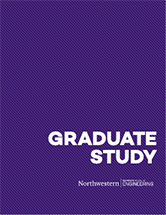A Student Project That Continues to Evolve
Go behind-the-scenes of the droplet manipulation project within Northwestern's Master of Science in Robotics (MSR) program.
Students in Northwestern's Master of Science in Robotics (MSR) program spend much of their year at Northwestern developing robots or mechanisms from scratch, but on occasion, they are able to take work started by previous MSR students and expand on it to help it continue to move forward.
That is exactly what happened with a droplet manipulation project students have now worked on for more than three years.
The project began in 2015 with Josh Marino (MSR '15).
The original idea for the project was to control the interactions between small amounts of liquids. Research had already been conducted on this phenomenon where droplets bounce off very thin films of liquid, and so the idea was to apply that to an existing project that used an oscillating table to move objects around.
"I was able to work on many aspects of the project during its initial phase, including research, programming, mechatronics, prototyping, and experimentation," Marino said. "Because of this, I was able to help figure out what worked and what did not work for producing the droplets and controlling their motion on the Stewart platform."
Marino spent two quarters on the project, as well as an additional six months as a research scientist after he graduated.
Nathan Corwin (MSR '16) was able to take the work Marino did and advance it while making it his own project.
"Josh did an excellent job and made significant progress with the project," Corwin said. "He built the droplet generator and got it working with the vibration table and high-speed cameras. He also successfully got droplets bouncing for extended periods of time."
Corwin expanded on Marino's work by adding a 2D gantry to the system to control the placement of droplets and used that to get multiple droplets bouncing simultaneously. He also added an image analysis program to track the motion of droplets in videos.
"This project had a little bit of everything: communication between multiple computers and microcontrollers, data collection and image analysis using high-speed cameras, design and building a 2D CNC, and experimentation with the droplets," Corwin said. "And the project had enough work already put into it that I didn't need to start from scratch, while also having enough for me to add meaningfully to it."
Professor Paul Umbanhowar has overseen the project since its inception, and he presently is advising a current MSR student who is taking what Corwin and Marino did and continuing to expand on it.
"All three of the MSR students who have worked on this project have made great strides in integrating the various mechanical, computational, and optical components into a coherent and well-controlled system," Umbanhowar said.
Today, Marino is a Robotics Engineer for Intelligent Automation, Inc., a technology innovation company. Corwin, meanwhile, is a robotics programmer at Pratt & Whitney, where he works on and develops new robotic manufacturing systems.
Corwin credits projects and opportunities like his droplet manipulation work for helping him get to where he is today.
"The MSR program did an excellent job of teaching me technical skills I am using in my professional work, and this project was a good example of real-world engineering projects," Corwin said. "I had to jump into an existing project, learn everything I could about it, and then start making significant progress on it in a limited period of time. My first week at Pratt, I got put on a project in very similar circumstances."

